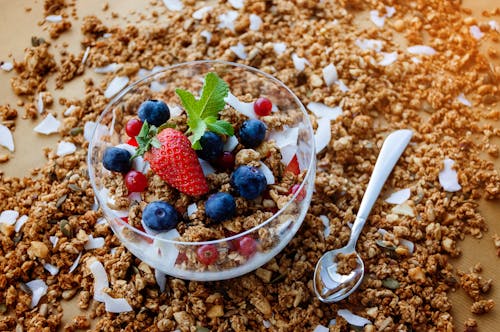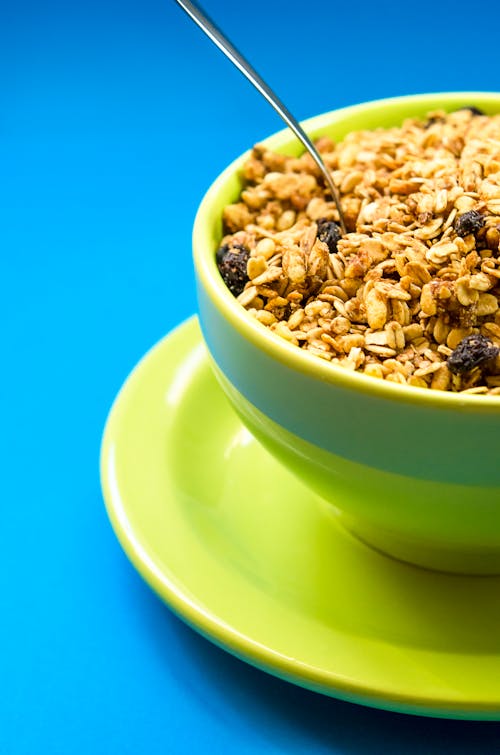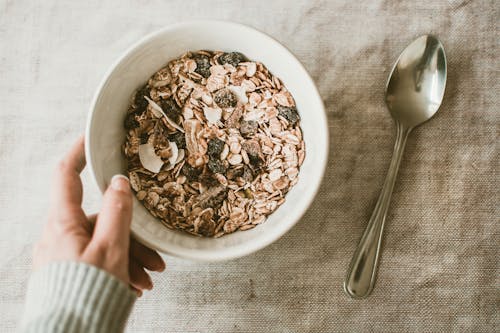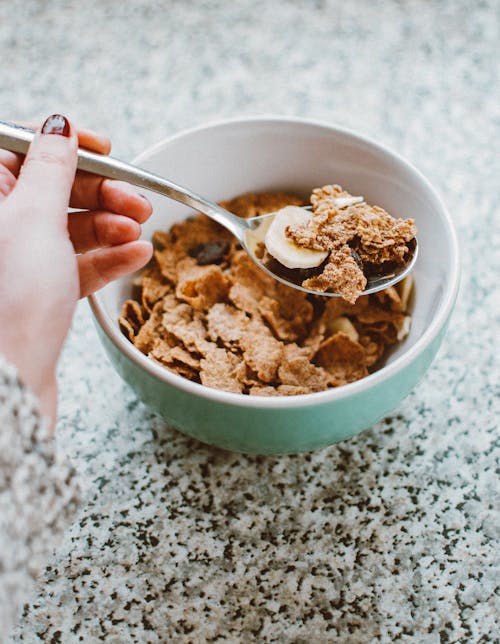Cereal: A Timeless Staple That Continues to Shape the Way We Eat
From breakfast tables in bustling family homes to quiet solo mornings before work, cereal has long been one of the most iconic and accessible foods of the modern era. Its simplicity, versatility, and nostalgic charm have kept it at the heart of countless daily routines. But beyond its familiar crunch lies a story that’s deeper than most people realize — one that spans cultures, innovations, nutrition science, and lifestyle changes.
Today’s cereal aisle looks very different from what it did a few decades ago. Options range from sugar-laden classics to protein-packed, grain-free alternatives. Some cereals are kid-focused with colorful mascots, while others cater to fitness-minded adults or those with specific dietary needs. Despite this evolution, the core idea remains the same: an easy-to-prepare, satisfying meal that fits neatly into our increasingly fast-paced lives.
Let’s explore what cereal really means in today’s world — how it started, how it’s evolved, what types are available now, and how to make smarter choices whether you’re pouring a bowl for yourself or your family.

A Brief History of Cereal
The story of cereal starts in the late 1800s, rooted in a movement toward clean eating and digestive health. It was originally developed as a health food — a way to bring fiber back into the American diet. Brands like Kellogg’s and Post were pioneers, creating products that not only met this health-focused demand but also revolutionized how people approached breakfast.
Cereal quickly grew from a niche wellness item into a mainstream cultural phenomenon. In the mid-20th century, with the rise of TV advertising and mass production, it transformed into a kid-friendly, colorful industry built around fun. Mascots like Tony the Tiger and Toucan Sam became household names, and breakfast became as much about entertainment as it was nutrition.
But over the last two decades, there’s been another shift. As consumers became more label-conscious and health-aware, the cereal industry responded. Today’s cereals span a wide range — from sugary comfort brands to keto-friendly, high-protein blends. Cereal is no longer just breakfast; it’s a vehicle for functional nutrition, weight management, and lifestyle alignment.

The Many Faces of Cereal
Modern cereal isn’t just one thing. It’s not just flakes or puffed rice or loops floating in milk. It’s a broad category that reflects changing dietary trends and evolving consumer needs. Let’s break down the types of cereals most commonly found on store shelves:
1. Traditional Cold Cereals
This includes the classics: corn flakes, wheat bran, rice crisps, granola clusters, and oat-based options. These are often eaten with milk, yogurt, or plant-based alternatives. Some are sweetened, while others are plain and fiber-rich.
2. Hot Cereals
Oatmeal, cream of wheat, and grits fall under this category. Hot cereals are comforting, customizable, and often higher in fiber — especially if you go with whole-grain or steel-cut options.
3. Granola
Often considered a hybrid between a snack and a cereal, granola is typically made with oats, nuts, seeds, and some type of sweetener. It’s calorie-dense but nutrient-rich, often used as a topping for yogurt or smoothie bowls.
4. Muesli
This is an unsweetened mix of rolled oats, dried fruit, and nuts. It’s less processed than granola and commonly eaten soaked overnight or served cold with milk or yogurt.
5. High-Protein or Functional Cereals
These cereals are designed for specific health goals — high protein for muscle recovery, low carb for ketogenic diets, or added probiotics for gut health. These options often use alternative grains or legume-based ingredients.
6. Kids’ Cereals
Brightly colored and often high in added sugars, these cereals dominate a large share of the market. They’re designed to appeal to children through flavor, texture, and branding, though many parents are now seeking healthier versions.

Nutritional Value: The Good and the Bad
The word “cereal” can mean wildly different things nutritionally, depending on what you choose. Some cereals are packed with fiber, protein, vitamins, and whole grains, while others are essentially candy in a bowl. Here’s what to look for — and what to watch out for — when evaluating cereals:
What to Look For:
-
Whole Grains: Choose cereals where whole grain (like whole oats, whole wheat, or brown rice) is the first ingredient. These provide sustained energy and important nutrients like B vitamins and iron.
-
Fiber Content: Aim for at least 3–5 grams of fiber per serving. Fiber supports digestion and helps keep you fuller longer.
-
Protein: If you’re using cereal as a meal, 6–10 grams of protein is ideal. This can be boosted with milk, Greek yogurt, or added nuts and seeds.
-
Low Added Sugar: Stick with cereals that contain less than 6 grams of added sugar per serving. Check the label — natural sugars from fruit are okay, but added sugars should be minimal.
What to Avoid:
-
High Sugar Content: Some cereals have 12–18 grams of added sugar per serving — almost half the recommended daily limit for adults.
-
Artificial Colors and Flavors: Especially common in kids’ cereals, these add nothing nutritionally and can sometimes trigger sensitivity in certain individuals.
-
Highly Processed Ingredients: Cereals that use refined grains and synthetic additives offer little benefit and won’t keep you full for long.

Cereal and Dietary Lifestyles
As more people adopt specific diets for health, ethics, or environmental reasons, cereal brands have evolved to match. Whether you’re vegan, gluten-free, paleo, or trying to manage a condition like PCOS or high blood sugar, there are cereal options for nearly every diet.
-
Gluten-Free Cereals: Made from rice, corn, quinoa, or certified gluten-free oats. These are essential for people with celiac disease or gluten sensitivity.
-
Vegan Cereals: Many traditional cereals are already vegan, though it’s important to check for added vitamin D3 (which is animal-derived) or honey.
-
Low-Glycemic Cereals: For those managing diabetes or insulin resistance, cereals with high fiber and low sugar — like steel-cut oats or unsweetened bran — help stabilize blood sugar.
-
Keto and Low-Carb Options: These often use coconut flour, almond flour, or flaxseed instead of traditional grains.
Making Cereal Work For You
Cereal can absolutely be part of a balanced diet — but it’s all about how you build your bowl. Here are a few strategies to make cereal meals more nourishing:
-
Use Better Bases: Start with a cereal that’s low in sugar and high in fiber. This gives your meal a stable foundation.
-
Add Protein: Use high-protein milk (like soy or pea), or stir in Greek yogurt or a spoon of almond butter.
-
Include Healthy Fats: Sprinkle in nuts, seeds, or coconut to slow digestion and keep you full longer.
-
Top with Fruit: Fresh berries, bananas, or chopped apples provide natural sweetness and extra fiber.
-
Portion Mindfully: It’s easy to pour twice the serving size. Use a measuring cup at first to train your eye.
Beyond the Bowl: Cereal in Recipes
Cereal doesn’t have to be confined to breakfast. It can be used creatively in both sweet and savory dishes.
-
Baking Ingredient: Use cereal in muffins, cookies, and bread for texture and added fiber.
-
Trail Mix Base: Combine low-sugar cereal with nuts, seeds, and dried fruit for an energizing snack.
-
Yogurt Parfaits: Layer cereal with Greek yogurt and fruit in a jar for an easy meal prep idea.
-
Coating for Chicken or Fish: Crushed cereal (like cornflakes or bran flakes) can be used as a gluten-free breading option.
-
Smoothie Bowls: Use granola or muesli to top a thick smoothie bowl and add crunch.

The Future of Cereal
Cereal may have started as a simple food, but its future is anything but bland. With rising consumer demand for functional foods, sustainability, and convenience, cereal companies are innovating fast. You’ll now find options with:
-
Probiotics for gut health
-
Adaptogens for stress relief
-
Plant-based proteins
-
Sustainable packaging
-
Superfoods like chia, flax, and spirulina
And as plant-based eating continues to rise, expect more oat-, quinoa-, and chickpea-based cereals to hit the shelves. These aren’t just trends — they’re signals that cereal will remain relevant and meaningful in the years to come.

Final Thoughts
Cereal is one of the few foods that’s been with us through nearly every stage of life. It’s nostalgic, comforting, and — when chosen wisely — incredibly nourishing. Whether you’re rediscovering it as a busy adult or sharing it with your kids for the first time, cereal still holds its place at the table.
It’s not about the sugar-coated loops of the past, but about building smarter, better meals around a food that’s endlessly versatile. With the right knowledge and a little label reading, cereal can be much more than a quick fix — it can be a foundational part of healthy, modern eating.



